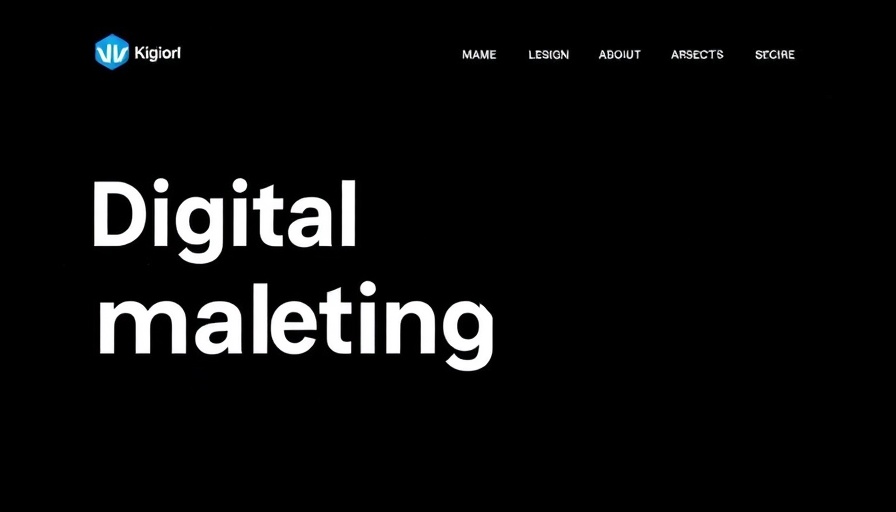
Understanding AI's Role in Email Deliverability
In today’s digital landscape, sending an email isn’t just about hitting 'send'; it's a performance before a conditional judge—an AI algorithm meticulously observing real-time engagement. As explained by renowned digital marketing expert Neil Patel, your emails might not be landing in inboxes for seemingly harmless reasons like content or timing, but rather due to the judgments passed by powerful AI tools from Google, Apple, and Microsoft. These algorithms dissect user behaviors such as opens, clicks, and even whether an email is marked as spam to determine email relevance.
In 'AI Is Blocking Your Emails', Neil Patel sheds light on critical insights about email deliverability that are crucial for marketers looking to optimize their strategies.
Breaking the Email Depth Spiral
Have you noticed a plummeting open rate despite crafting the perfect email? The culprit may be an ‘email depth spiral,’ a phenomenon where poor engagement reduces visibility, leading to even lower engagement in a vicious cycle. As marketers, we often focus on acquiring a larger email list, believing it leads to higher engagement. However, Patel warns that a bloated list filled with disinterested subscribers only serves to hurt your sender reputation further, pushing your emails into the spam folders.
The Power of List Pruning
Realizing the damage disinterest can cause is essential for any email marketer. Patel recounts an example of one client who, despite boasting a 50,000 subscriber list, saw diminishing returns, largely due to 35,000 inactive yet retained contacts. The solution? A dramatic reduction in this list, resulting in a revitalized sender reputation and improved open rates. In fact, the remaining smaller list led to higher engagement numbers, proving that quality outweighs quantity.
Building Trust with AI
Your relationship with the inbox AI should mimic that of a trusted friend. This means being consistent with your email schedule and respecting subscriber boundaries—avoiding the temptation to bombard them with emails during high-sales periods. The key takeaway is that regular, thoughtful engagement fosters trust and improves your email’s likelihood of being seen in the primary inbox.
The Art of Personalization and Segmentation
As the digital age evolves, so too must our strategies. A fundamental trend in email marketing is the need for personalized content. Sending the same email to your entire list runs the risk of tarnishing your reputation. Implementing behavior-based segmentation is no longer an option—it's essential. Track your audience's behavior, and adjust content accordingly to maximize your email's effectiveness. Regularly targeting subscribers based on their engagement history can result in improved performance metrics and higher conversion rates.
Authenticity Over Professionalism
Counterintuitively, it’s been shown that emails designed with traditional professionalism in mind—bright graphics and complex layouts—may inadvertently trigger spam filters. The current trend favors simplicity and authenticity, where a straightforward, conversational tone resonates better with recipients. Fewer design flourishes signal personal communication over marketing, positioning your content for better deliverability.
The Importance of Encouraging Replies
Perhaps the most effective strategy for improving email performance is encouraging genuine responses. Each authentic reply to your emails tells the algorithm that your content is valued, significantly bolstering your reputation and boosting your emails’ reach. Create opportunities for dialogue—ask open-ended questions, request feedback, or prompt ideas from your audience. This not only drives engagement but solidifies you as a trusted source in their inbox.
Adapting to the Evolving Landscape of Email Marketing
In an era where algorithms dictate success, adapting to the nuances of email marketing is crucial for any marketer. Neil Patel’s insights resonate deeply—today’s marketers need to build a community of engaged subscribers who actively seek out their content, valuing the relationship over mere numbers. With proper understanding and action, this shift can maximize email marketing potential, turning a potentially declining strategy into a thriving channel for business growth.
At its core, email marketing now represents more than just a pathway to a sales funnel; it embodies a community-building opportunity that, if navigated properly, can prove to be one of your most profitable channels.
 Add Row
Add Row  Add
Add 




Write A Comment